When it comes to Ishikawa, most people know it by the city of gold – Kanazawa (金沢).
There are much more to explore on this prefecture located on the Japan Sea coast. The first stop for me was Wajima (輪島), a historical city known for its Asaichi (morning market) and lacquerware.

Posters from our hotel, the middle depicting a busy morning market and the one on the right, a beautiful rice terrace known for its night illumination.
Chirihama Nagisa Driveway (千里浜なぎさドライブウェイ)
Ever thought that you could drive on a highway that’s made of… sand?
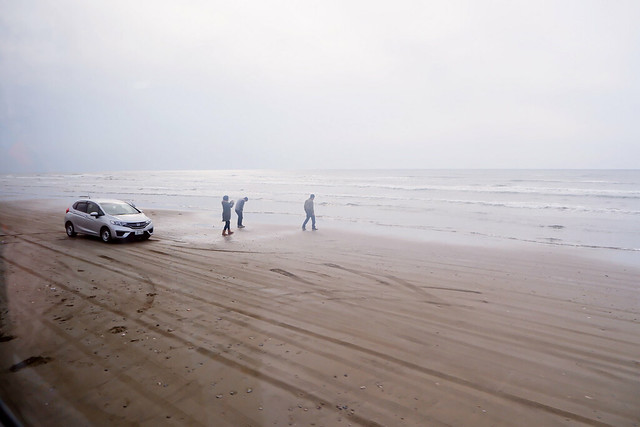
Well, here you could. And it’s the only place in the whole Japan you could do so.

We were on the chartered bus and it was so surreal to peek outside the window and see the beach right below us, a view stretching far out to the Sea of Japan. It was my first time seeing the ocean at other side of Japan.
Just to give you an idea:

That’s where Wajima is, it’s at the most northern part of West Japan, jutting out to the Sea of Japan.
I’m used to enjoying the warm blue Pacific Ocean along East Japan, and they say that it’s very characteristic for the Sea of Japan to have this cold, slightly lonely feel to it.

This driveway is legit, there’s traffic signs!!!

“End of driveway”. It was an 8 kilometers of new, curious excitement.

And we made a brief stop at Chirihama Rest House.

Which is also very special as it is right by the beach!
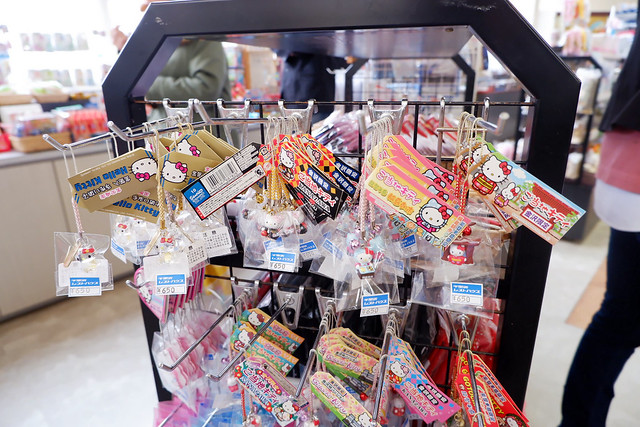
Yay! Got my Ishikawa Gotochi Kitty here!

There was also Sakura Soba, which temptation I couldn’t resist, expectedly.

Don’t forget to try their specialty – Ika dango (squid ball). Really yummy.

We then checked into our hotel, and my room is on the 7th floor named Sakura. ^^

We were told to dress as warm as we could, it was a super windy and chilly day, and we had to be out at night to capture a dazzling scene nearby!
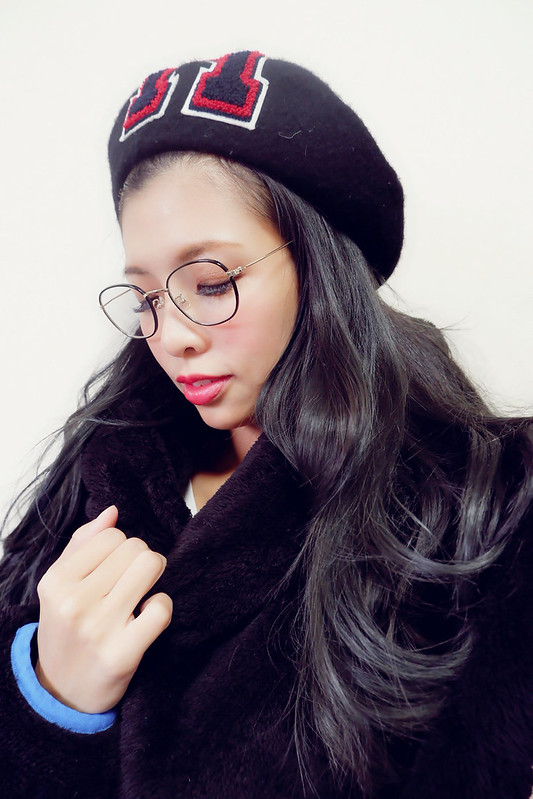
(hair was fading to an ash grey from midnight blue.)
Shiroyone Senmaida (白米千枚田)
It literally means a thousand white rice fields.
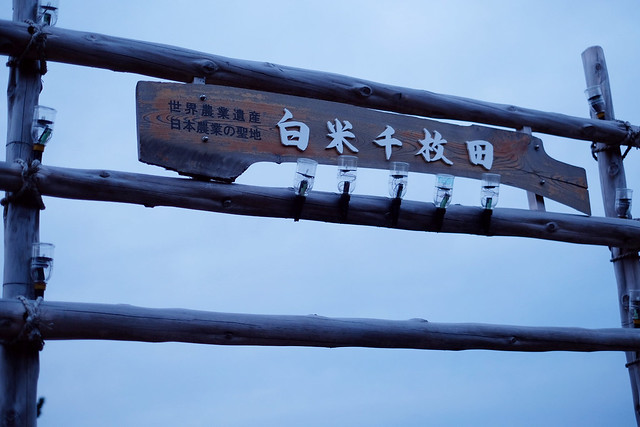
And surprisngly, there are really 1000 rice terraces on a single slope stretching down to the sea!! The Senmaida is also listed as a Agricutural World Heritage Site for their long agricultural tradition.
The special things about Senmaida:
1.Since there are a thousand paddy fields and they are extremely small in size, no machinery can be used for farming, so all the work needs to be done manually by hand, up until present time!
2. It is the only rice fields in Japan that’s watered with only rain water

We were waiting for the sun to set for a special view of the rice terrace.

Meanwhile enjoy the sun setting over an ocean which I don’t get to see very often.
Senmaida is the most refreshing in summer when the fields are watered and is a whole stretch of lush, fresh green. 
(Image from this site)
Here are some other images from the internet:

When the fields are watered with beautiful reflections from colorful rays.

Winter gives it a completely different feel.
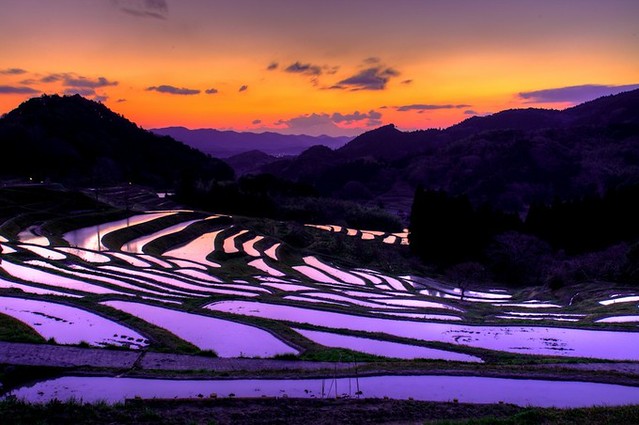
And the sunsets…

When the harvest time comes, it turns bright golden yellow…
How can rice fields has so many different looks over the year??
However from October to mid March, there’s no farming work and it’s not particularly spectacular to behold.
It looks… like this.

A bit of a disappointment to be honest.
But something special is happening.
Guess what??

Yes, night illumination that the Japanese love sooooo so much.

The sun has set, and we were waiting for the dark field to be lit up.
And…

There it was.
The terraces clad in thousands of dazzling LED lights that twinkle in the night field. It was spendid. All lights were placed by hand by the locals, I could only imagine the love they have for these precious fields.

This special Light-Up is called “Aze No Kirameki”, and is done annually. The day we went was the second last day of the event, we were really lucky to catch such a

The steep slope adds dimension for landscape photography.

So, so beautiful.

The lights changes colors every 30 minutes!

Me!!

There was a cafe at Senmaida and look at the pastel-color Taiyaki!!! In green is Yomogi flavored and in pink is Noto Salt flavored. (Noto is the town in Ishikawa where Wajima is in!)

200 yen each!

Bought one!
Madara Yakata まだら館
For dinner it was a lovely restaurant that served traditional local cuisines in Wajima.
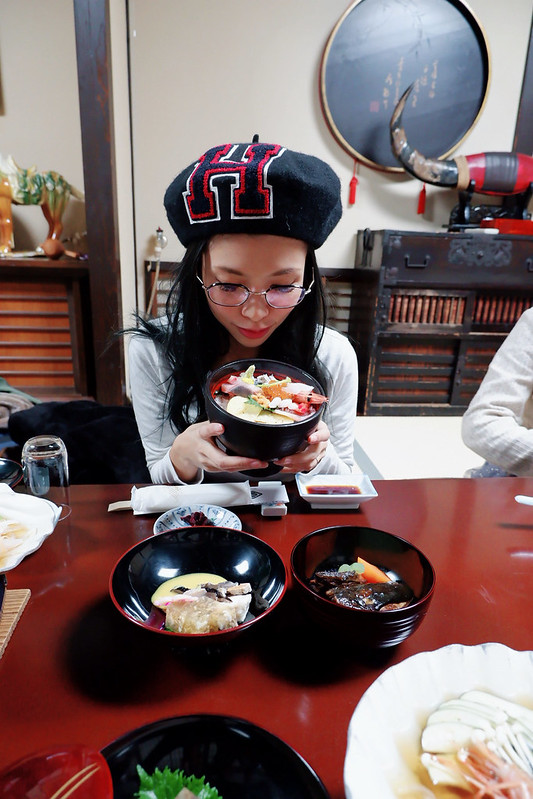
Lots of seafood as Wajima is a traditional fishing village.

Our kaisendon.

Baby-free nomikai XD. Only time I get to drink is when I’m away from Sakura.

High-tension (in the Japanese sense) haha.
Wajima Asa Ichi
We stayed in an affordable hotel called Route-Inn Wajima, which is located a few minutes’ walk away from the famous morning market, Wajima Asa Ichi!

Fugu (puffer fish) is also famous here in Wajima.

The market starts at 8am but was a rainy day so the morning rather quiet. It is said that the market existed since more than 1000 years ago in the Heian Period ((794 – 1185) and it is one of the oldest morning markets that are still running until today!

The aunty-trio of the day.

The market mostly sells fresh produce like fresh or dried seafood and local fruits and vegetables. You can also spot a few shops that specialise in lacqueware, the most famous product from Wajima, as well as other wooden utensils

One of the shops that we visited had lost of items displayed at only half price!!

I couldn’t believe that their beautiful Magewappa (a traditional woodcrafted bento box) is only selling for 2000 yen!! Everywhere else I went had price tags so steep (usually above 5000 yen), which is the reason why I still did not own one until I went to this shop. And the bento boxes are two-tiered which could be easily kept into just one box.

All of us got one each, it was a deal too good to miss!

House cats guarding the shop.
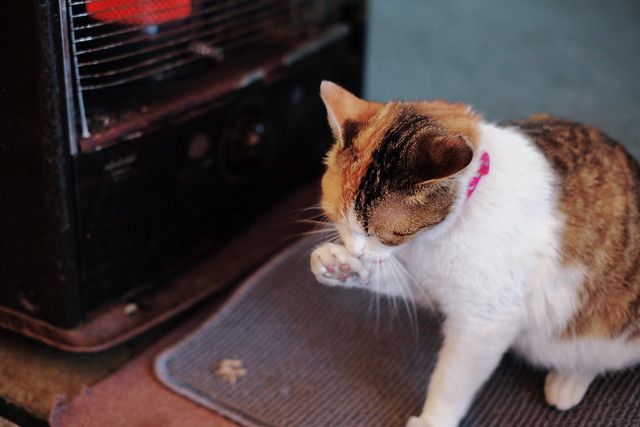
Meow.

Personalized designs on their wooden utensils which go for a a mere few hundred yen.
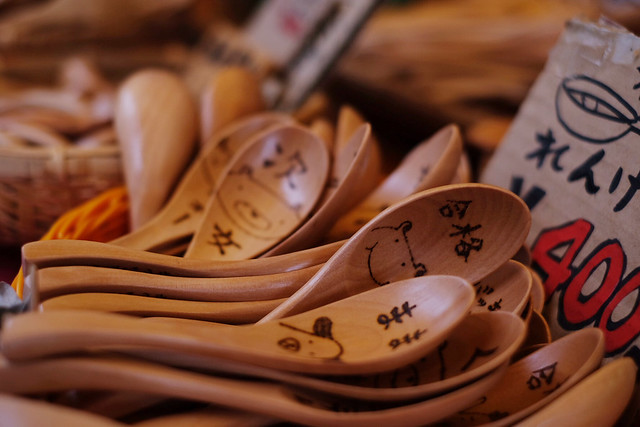
The carvings/messages on the wooden spoons include “papa”, “mama”, “second daughter”, “genius”, “congratulations”, etc. Perfect to get them as gifts!

A house Shiba.
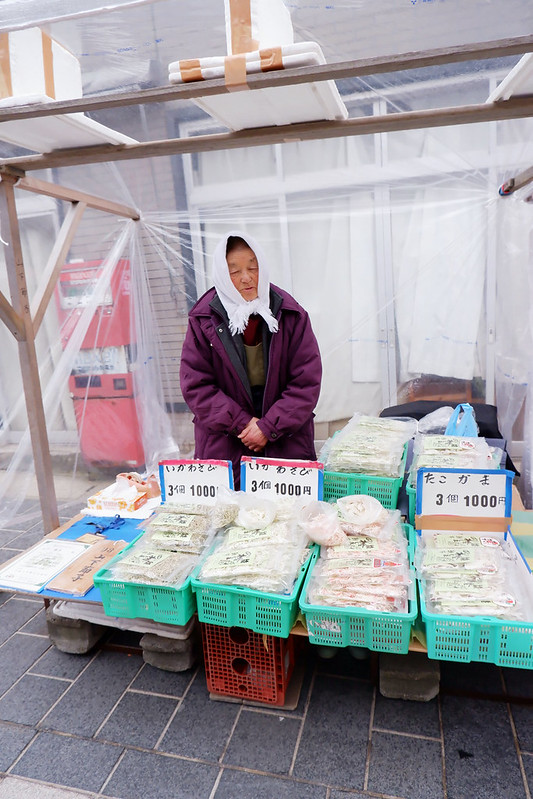
Dried shaved squid and crabsticks in different flavors included wasabi. The obaachan beckoned us to try some and I really couldn’t resist. Every time I try something I just had to buy them XD.
I got 3 packs and without me asking for it she gave me one extra pack as “omake” (a bonus item). This is soooo typically Japanese haha. While every other street vendor in lots of other countries try to rip their curious tourists off, the Japanese almost always voluntarily offer to earn less😂.
I seriously doubt if they know how business negotiation works XD.

Thank you Obaachan!

A vending machine for… wait what? Batteries… And I wonder how long expired they are!!
Teraoka Noto Beef Yakiniku

I am suspecting that every prefecture in Japan will pride themselves claiming that their local beef is Japan best, haha. I can’t deny that, though, that so far almost all the beef I’ve had in different prefectures are qualified to compete for the title. There was the famed Matsusaka and Kobe beef in Kansai area, and then Miyazaki and Saga beef down south, in Tohoku, Fukushima beef was amazing and Sendai beef was delicious (and of course their gyutan!), and now at the Horuriku area, we have the Noto beef, a Japanese black cattle pedigree, raised in Ishikawa.

Awards galore for this delicious, fatty beef.

Yummy!
That’s all for today. Next up it will be everyone’s favorite in Ishikawa – Kanazawa!


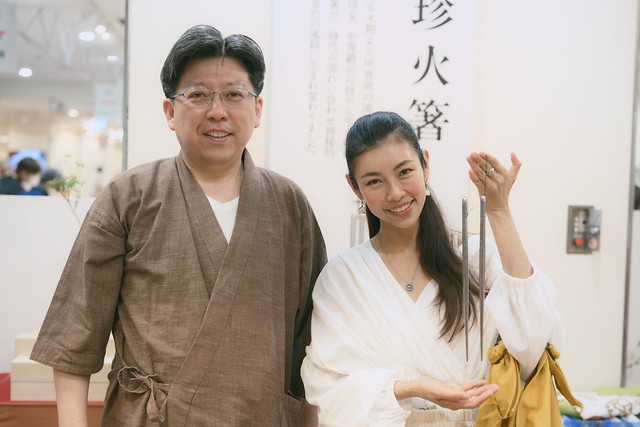












I love, love, love reading your posts about Japan because they always inspire me to visit – sometimes again, like this Wajima’s case! I’ve been there but have missed some of the places you mentioned. Senmaida looks beautiful in all seasons of the photos you post! 🙂
–
Charmaine Ng | Architecture & Lifestyle Blog
http://charmainenyw.com
It seems like you have been to most places that I have covered so far!!😱 Are you gonna join the mission? haha.